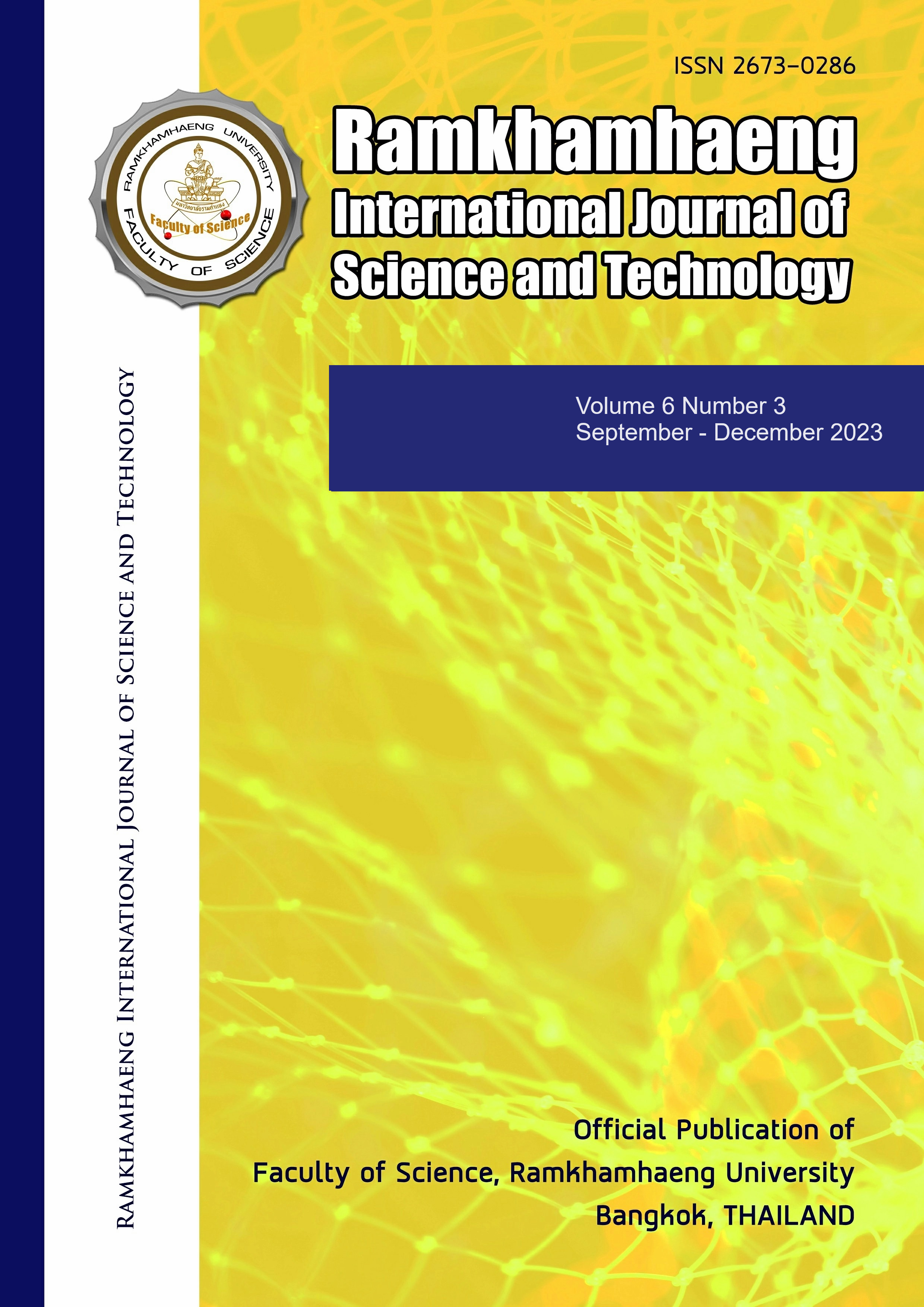Inhibitory effect of Ficus racemosa leaf extract on Staphylococcus aureus
Keywords:
Ficus racemosa, methanolic leaf extract, Staphylococcus aureus, antibacterial activityAbstract
Current antimicrobial research does not only focus on the identification of new chemical antibiotics but also on the identification of natural compounds present in plant-based traditional medicines. In Thailand, Ficus racemosa is an excellent representative of medicinal plants that provides health benefits in several diseases. Preliminary evaluation of the antibacterial activity of Ficus racemosa leaf extract against Staphylococcus aureus. Fresh leaves of F. racemosa were collected and extracted in methanol. The methanolic extract of F. racemosa was diluted in sterile distilled water and analyzed for contained phytochemical agents. Antibacterial activity against D-test negative and D-test positive S. aureus was evaluated by agar disk diffusion and broth dilution methods to determine inhibition zone, minimum inhibitory titer, and minimum bactericidal titer, respectively. Stability of active agents against S. aureus was tested on the day of extract preparation and 15 days later. Chemical analysis suggested the presence of flavonoids and tannins in the methanolic extract of F. racemosa. Inhibition of bacteria was dose dependent and not different between the two tested S. aureus strains at day 1 and day 15. Higher concentrated F. racemosa extract showed higher antibacterial activity than lower concentrated extract in all measurements. Agar disk diffusion seemed not to be suitable to evaluate antibacterial activity of the F. racemosa methanolic extract as it showed only a very narrow inhibition zone. However, the broth dilution assay allowed to determine an inhibitory titer. Our data indicates that methanolic F. racemosa leaf extract contains potent antimicrobial compounds. The ability to inhibit the growth of two different drug-susceptible strains of S. aureus suggests that these plant-derived compounds are alternative antimicrobial drugs.
References
Akiyama H, Fujii K, Yamasaki O, Oono T, Iwatsuki K (2001) Antibacterial action of several tannins against Staphylococcus aureus. Journal of Antimicrobial Chemotherapy 48(4): 487-491.
Bagyalakshmi B, Nivedhitha P, Balamurugan A (2019) Studies on phytochemical analysis, antioxidant and antibacterial activity of Ficus racemosa L. leaf and fruit extracts against wound pathogens. Vegetos 32: 58–63. doi: 10.1007/s42535-019-00007-6.
Cheng JX, Zhang BD, Zhu WF, Zhang CF, Qin YM, Abe M, et al (2020) Traditional uses, phytochemistry, and pharmacology of Ficus hispida Lf: A review. Journal of Ethnopharmacology 248: 112204. doi: 10.1016/j.jep.2019.112204.
Cowan MM (1999) Plant products as antimicrobial agents. Clinical Microbiology Reviews 12(4): 564-582. doi: https://doi.org/10.1128/cmr.12.4.564.
Cushnie TT, Lamb AJ (2005) Antimicrobial activity of flavonoids. International Journal of Antimicrobial Agents 26(5): 343-356. doi: 10.1016/j.ijantimicag.2005.09.002.
Daglia M (2012) Polyphenols as antimicrobial agents. Current Opinion in Biotechnology 23(2): 174-181. doi: 10.1016/j.copbio.2011.08.007.
Kingsley JD, Tirkey PM, Ritika C, Jayanthi A (2014) Evaluation of antimicrobial activity of Ficus racemosa Linn leaves extract. International Journal of Pharmacy and Technology 6(1): 6310-6317.
Koodkaew I, Boonraksa K, Sengseang N (2018) Preliminary phytochemical determination and phytotoxic effects of Mimosa pudica L. leaf crude extract. Khon Kaen Agriculture Journal 46 (1) : 129-136 (in Thai).
Neumann N, Honke M, Povydysh M, Guenther S, Schulze C (2022) Evaluating tannins and flavonoids from traditionally used medicinal plants with biofilm inhibitory effects against MRGN E. coli. Molecules 27(7): 2284. doi: 10.3390/molecules27072284.
Pękala-Safińska A, Tkachenko H, Kurhaluk N, Buyun L, Osadowski Z, Honcharenko V, et al (2021) Studies on the inhibitory properties of leaf ethanolic extracts obtained from Ficus (Moraceae) species against Aeromonas spp. strains. Journal of Veterinary Research 65(1): 59-66. doi: 10.2478/jvetres-2021-0007.
Pingale T, Duse P, Ogale S (2019) Antibacterial and antifungal approaches of Ficus racemosa. Pharmacognosy Journal 11(2): 355-357. doi: 10.5530/pj.2019.11.53.
Polyium U, Kuttiyawong A, Panya N (2014) The potential development of Ficus hispida Linn. use to traditional herbs and cancer prevention for generate knowledge and heritage of local wisdom: Final research report. N.p.: Rajamangala University of Technology Phra Nakhon, Bangkok (Thailand). Faculty of Science and Technology (in Thai).
Shahriar M, Islam S, Parvin S, Hoque S (2013) Thrombolytic activity and antimicrobial properties of Ficus hispida. Journal of Scientific Research 5(2): 393-397. doi: 3329/jsr.v5i2.11988.
Vittaya L, Chalad C (2011) Antimicrobial activity of Ficus hispida Linn. extract. RMUTSV Research Journal 3(2): 35-39 (in Thai).
Downloads
Published
Issue
Section
License
Copyright (c) 2023 Ramkhamhaeng International Journal of Science and Technology

This work is licensed under a Creative Commons Attribution-NonCommercial-NoDerivatives 4.0 International License.
Copyright Notice: a copyright on any article in the published journal is retained by the Ramkhamhaeng International Journal of Science and Technology. Readers or Users grant the right to use of the Article contained in the Content in accordance with the Creative Commons CC BY-NC-ND license and the Data contained in the Content in accordance with the Creative Commons CC BY-NC-ND.



